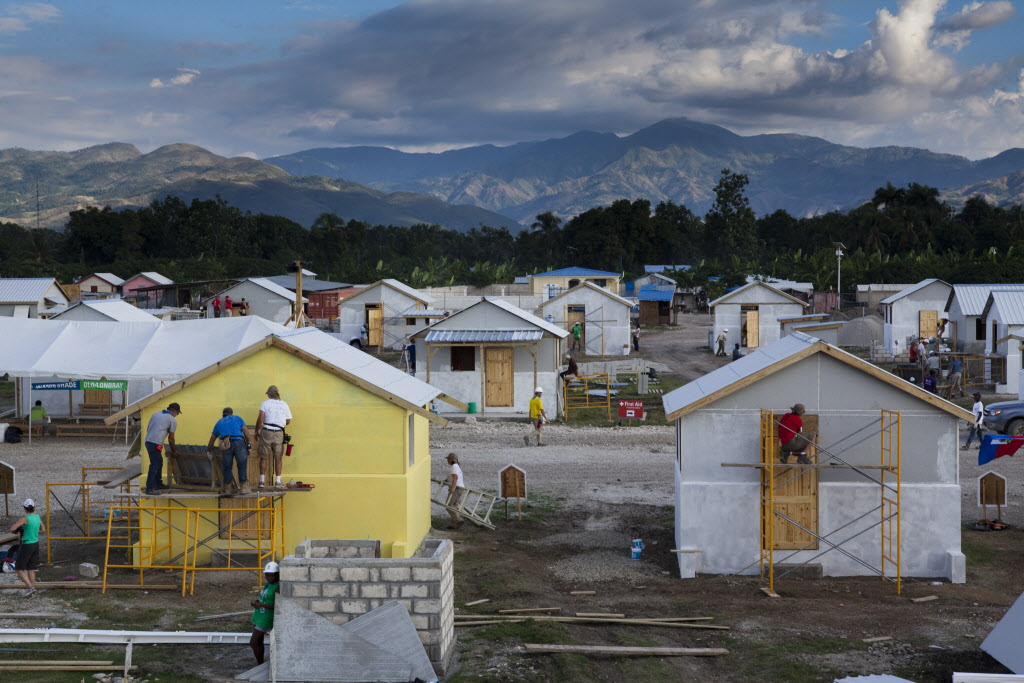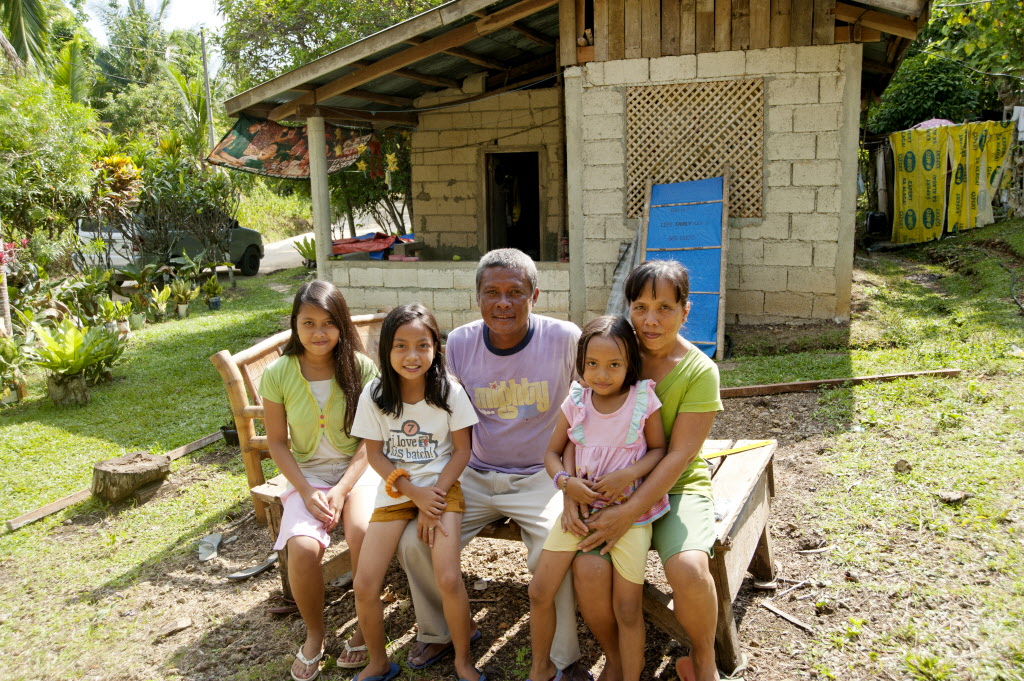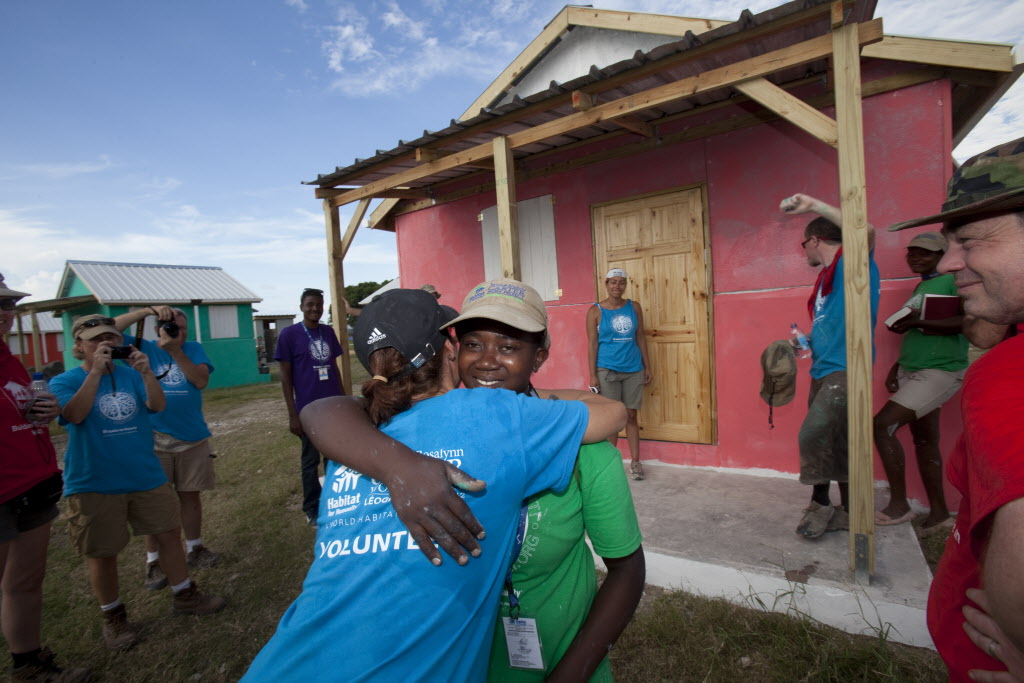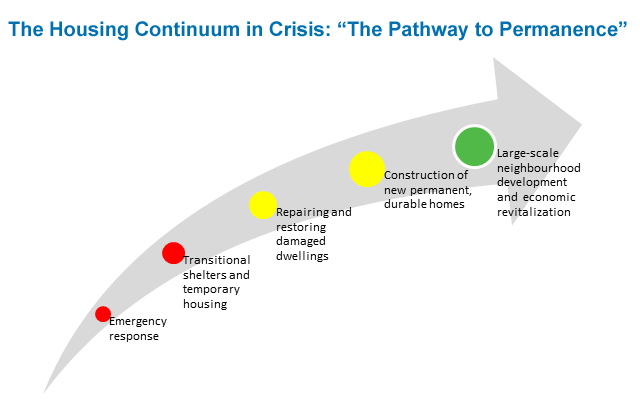Featured Series: From emergency shelter to permanent homes, providing safe and decent housing is critical to rebuilding communities torn apart by disaster.
This post was provided by Erin O’Neill, Director of International Programs for Habitat for Humanity Canada, as part of our featured series on Crisis Relief.

In the aftermath of a disaster, access to shelter – along with the other basic human needs of food, water and health care – is essential to survival. What makes providing shelter unique among these needs is the role that a safe and decent home plays in rebuilding communities long after the disaster or crisis itself, as families embark on the long journey to rebuild all they have lost.
Habitat for Humanity builds homes around the world on the simple but profound idea that a safe and decent place to live is the foundation on which all other dreams may be achieved – that when families have a safe and decent place to live, they are empowered to take control of their lives for their long-term happiness and success. This makes housing one of the most critical short- and long-term priorities in the wake of a crisis, and one of the greatest gifts that donors can provide for families in their time of need.
Habitat for Humanity Canada is linked into the global Habitat mission in many ways – through the construction of affordable homes for low-income Canadian families, by assisting Habitat in other countries through the provision of funds and volunteers, and by overseeing international development projects.
A Long-Term Approach to Rebuilding Communities: The Shelter Continuum
Habitat’s role in disaster recovery is not simply about rebuilding physical structures. Rather, it’s about using our area of expertise – housing — to restore social, economic, natural and cultural environments for communities and empowering families to be partners in their own recoveries over time.
Habitat views the rebuilding process as a continuum that we call the “Pathway to Permanence.” This is the general, step-by-step process that families move along from disaster homelessness to a permanent home, a timeframe that can last from a few weeks to many years.
Adjusting to Support Community Needs
Each crisis situation is unique. Habitat may play a range of roles at different stages in disaster recovery – roles that include providing emergency shelter kits, building homes or providing various housing support services.
Over time, Habitat’s programs will adjust to the particular needs of the community we are working in as these communities transition from crisis to relief to development stages of recovery. What is consistent in Habitat’s approach is our long-term approach to supporting communities.

Habitat in Action
Following the earthquake in Haiti, for example, Habitat for Humanity Haiti set a goal to serve 50,000 families over a five-year period. In partnership with Habitat affiliates and donors around the world, this goal was achieved in just three years.

Today, Habitat continues its work in Haiti, including 26 infrastructure programs in the Simon-Pele region of Port-au-Prince, building and repairing roads, adding street lighting, and retrofitting an additional 400 homes. In the process, and thanks to the support of Canadian donors and the department of Foreign Affairs, Trade and Development Canada, we are providing residents with construction skills training to lead help them lead their own recovery efforts.
Habitat also has an active presence in the Philippines, helping those who were displaced from their homes by Typhoon Haiyan in November 2013. Habitat immediately deployed into affected areas to provide 5,000 emergency shelter kits to families who lost their homes, with plans to distribute 30,000 shelter repair kits and 50,000 cleanup kits to affected families. Over the long-term, Habitat will continue to help affected communities with housing solutions, from transitional shelter interventions to permanent home reconstruction.
Habitat for Humanity Canada is a national, non-profit organization working towards a world where everyone has a safe and decent place to live. Learn more on their Charity Profile Page >>
Related Articles
This post was part of CanadaHelps’ series on crisis relief, an exploration of the way our lives are impacted when disaster strikes at home and abroad. Explore more articles in the series here.
Updated on October 31, 2024
Donate Now





